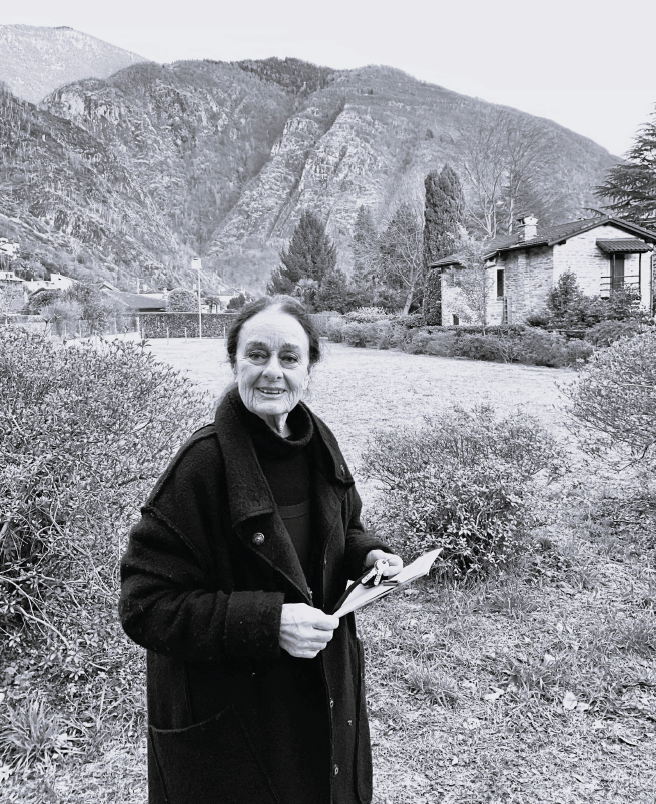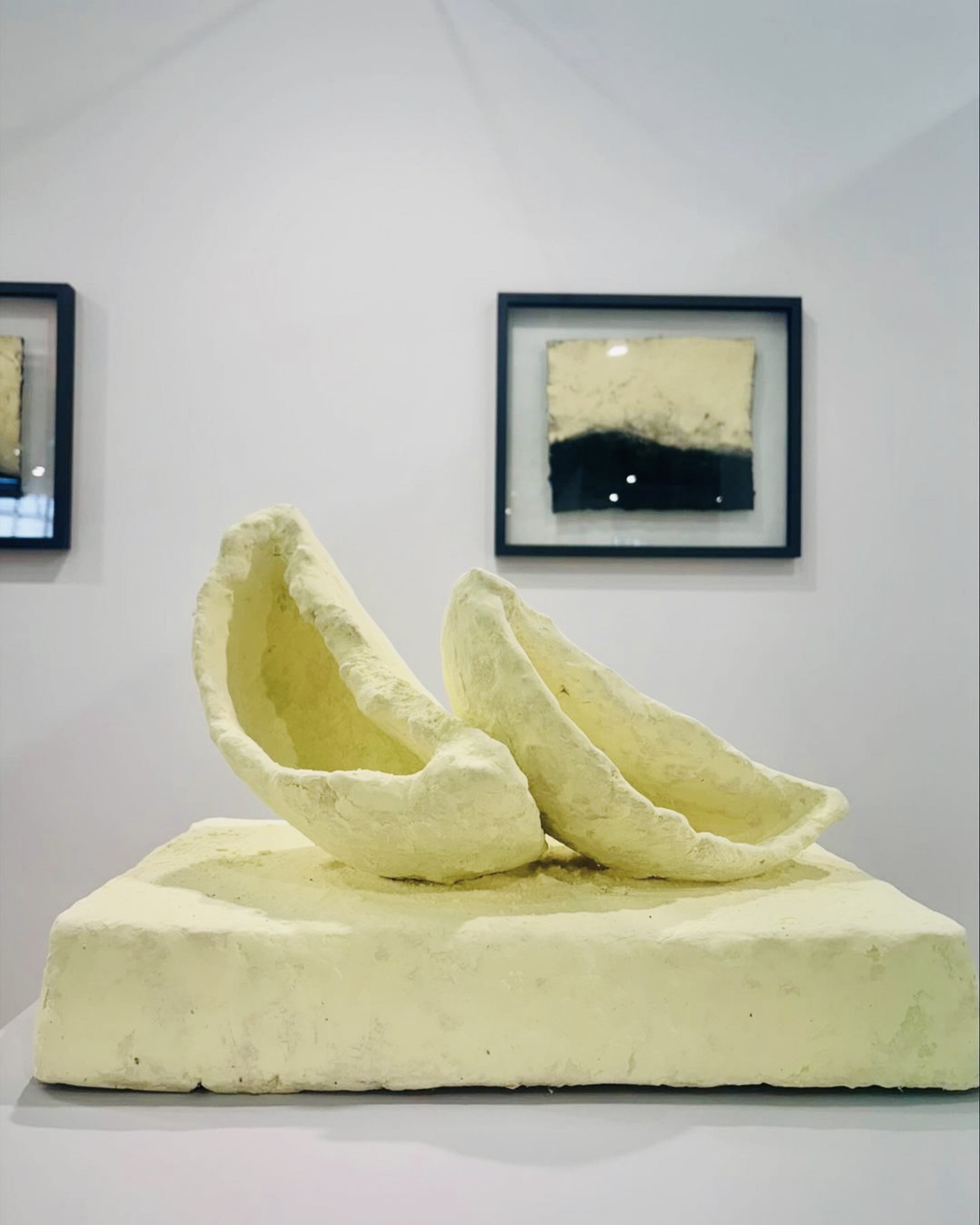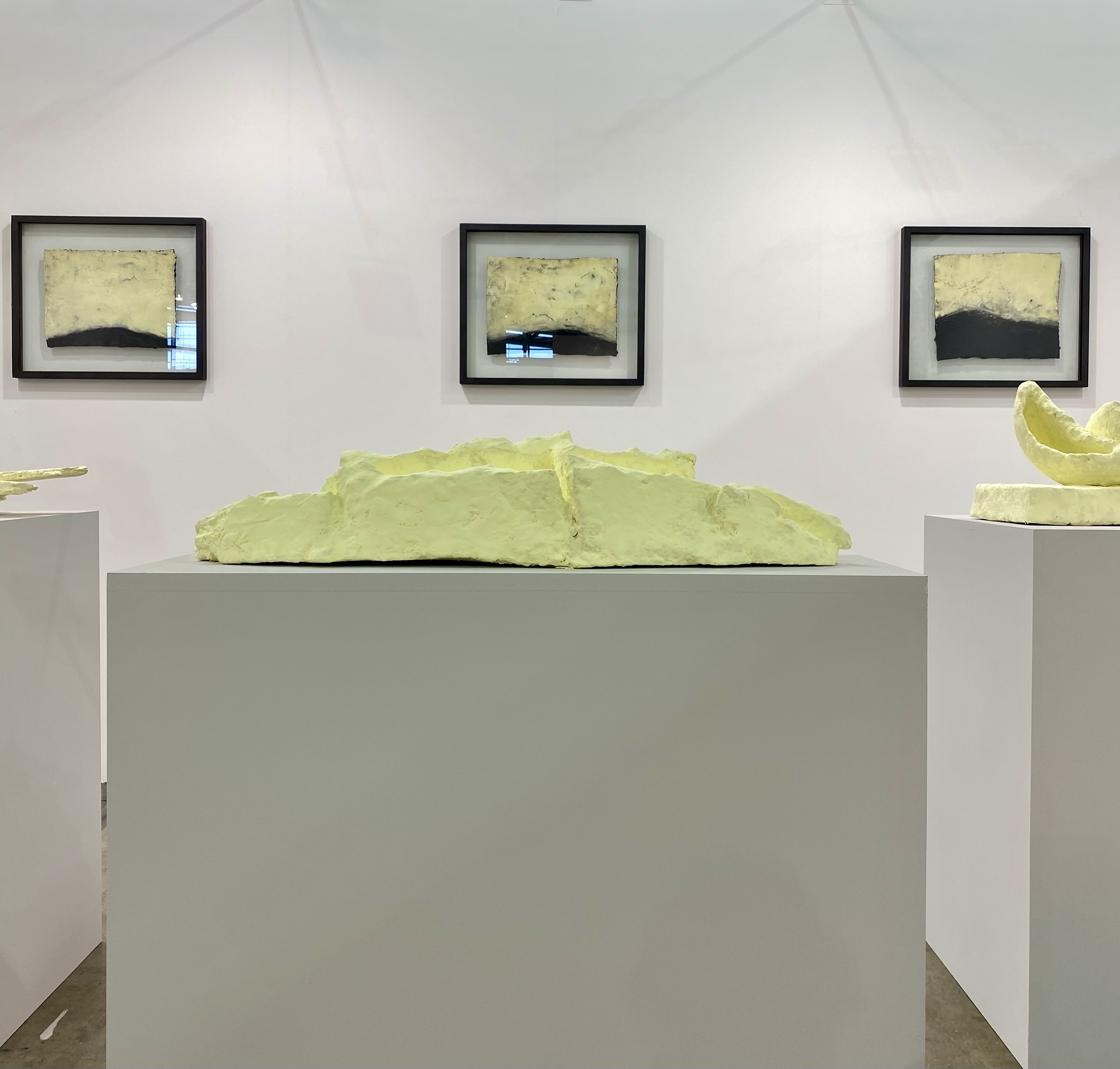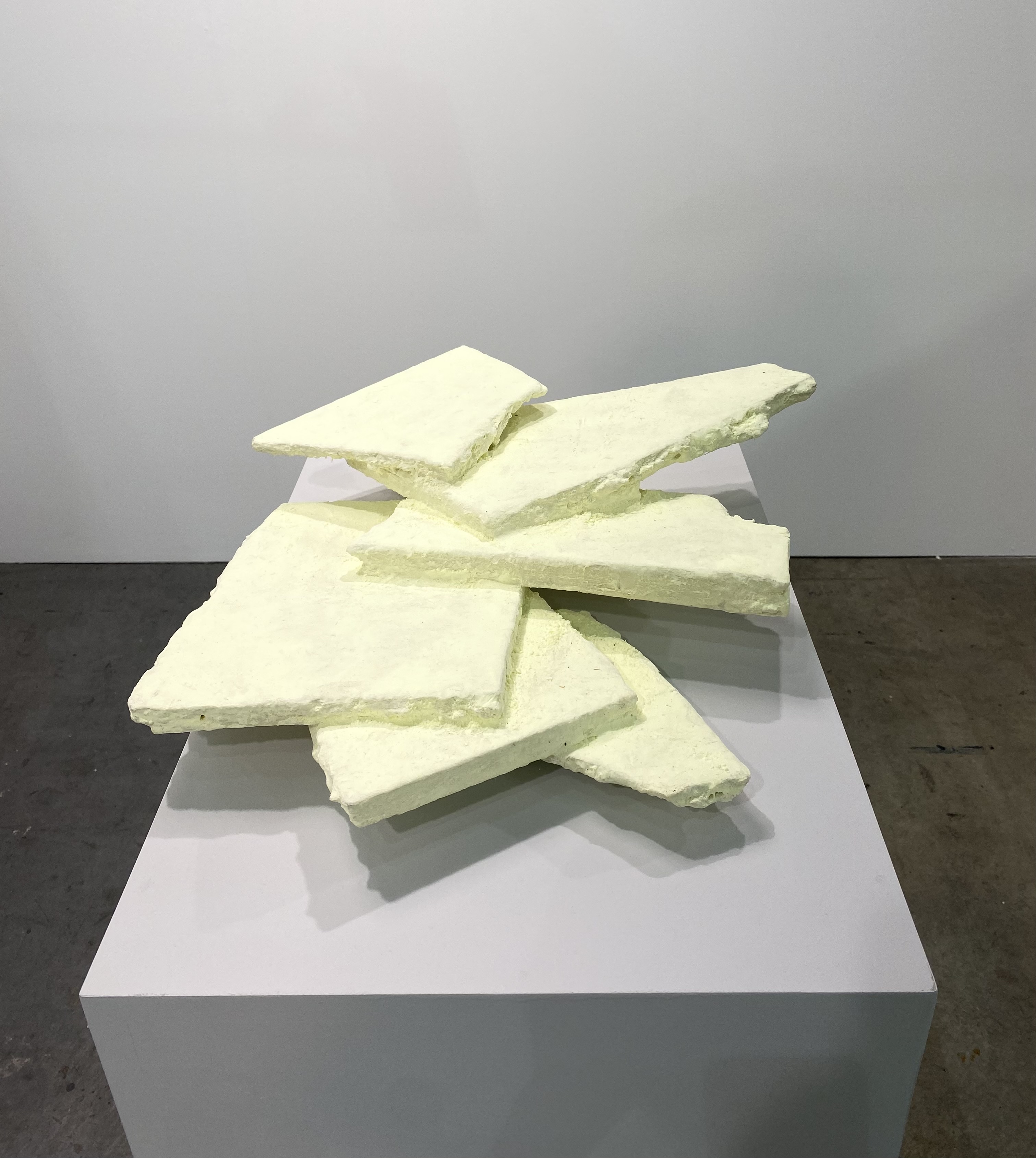Ingeborg Lüscher
Artissima Art Fair 2024

Ingeborg LÜSCHER
Artissima Back to the Future section
BOOTH BTTF7
Preview 31 October 2024 (by invitation)
Fair days 1-3 November 2024
"I discovered the sulphur in an old fashioned drug store in Locarno. I bought it all and in my atelier I put it in a big tub. I was fascinated by the huge light coming from this yellow material. It is not a pigment but an element. And one day I asked myself: why not paint with it?
It was a long process to arrive at the strong formulation of the paintings you see here in London. I knew immediately that I had to combine the sulphur with black. To give form to the coupling of light and darkness. An ideal couple has to consist of two equal beings. The problem was first that the sulphur was always stronger. I experimented with all black colours on the market, I made studies into black in art history. Nothing.
The solution was finally to create body, bones and muscles under the flat skin of the black colour. The body consisted of ash; the substance that survived the fire. What an enormous power! Now the black began to live. The new structure reflected the light and so they became equal. The couple was never a juxtaposition of heaven and hell, positive and negative, joy and catastrophe. They were a unit, not divided, away from any valuation. It is easy to react to the fabulous light of the sulphur. The black needs time to deliver to a peaceful deep inner zone. I still love this series of paintings. The process of doing them was always combined with a good feeling of concentration and harmony. I have the same feeling when I see them now.
The word painting is not exactly correct for this work, because nothing is painted. What seems to be painted is the presence of that which happened before. It shows the black body while the sulphur gives it a chance partly to show its existence. So the past becomes the present. Past and present are one and the same."
Ingeborg Lüscher
From the interview "80-year-old Ingeborg Lüscher – Art needs courage" 2016, www.phaidon.com
In 1936 Ingeborg Lüscher was born Ingeborg Löffler in Freiberg, Saxony (Germany). After finishing acting school she became an ensemble member of the Renaissance Theatre in Berlin. In 1959 she was touring with the theater company when in Basel she met and later married the Swiss colour-psychologist Max Lüscher. Repeatedly she played the feminine lead in b/w films for German and Swiss television.
In 1967, after relocating to Tessin and while filming in Prague, Ingeborg Lüscher became acquainted with dissidents of the Prague Spring and started to question her role in her own life. What followed was the separation from Max Lüscher and the beginning of the self-determined life as an artist, working in the former studio of Hans Arp in Locarno. She got in contact with artists of the Nouveau Réalisme. After first experimental works with fire and cigarette stubs she discovered the encyclopedic forest of the hermit Armand Schulthess in Onsernonetal, in 1969. Her photographic documentary of this forest earned her the invitation of Harald Szeemann to take part in the documenta 5, in Kassel 1972. The encounter was the beginning of a longlife partnership with Szeemann until his death in 2005. Their daughter Una Alja was born in 1975.
Ingeborg Lüscher’s artistic oeuvre radiates a unique radical-biographic honesty combined with the infinite joy of the richness of liveable life and its manifold levels of experience. In the seventies and eighties her photographic works and human paintings far from the artistic mainstream tended to become more ephemera and spiritual with themes like love and eros, death and birth, prophecy and dreams. Since 1976 and until today she invites artist collegues, neighbours and friends “to do magic”, documenting each of the meanwhile 520 performances by a series of black-and-white photographs. In 1984 she discovered sulphur as artistic material that to her in combination with ashes and black acrylic became a metaphor for the unity of the equal poles of light and darkness.
Gallery exhibitions in Switzerland, France, Austria, Germany, Italy and Spain as well as museum exhibitions in Paris, Solothurn, Malaga, The Hague, Wiesbaden, Philadelphia, Aarau, Chemnitz, Rovereto, Moscow and at other places made her work well-known throughout Europe and beyond. In 1992 she received a second invitation to the documenta in Kassel, where she presented a body of her sulphur works.
In China in 1999 Ingeborg Lüscher realized her first video film, which under the pseudonym Ying Bo was shown at the Venice Biennial that same year. In another video work entitled “Fusion” two Swiss soccer teams come to the pitch in grey Italian custom suits with white shirts and ties, a serenely as well as perfectly directed parable about rituals and rule violations in real business life.
Her photographs, video films and installations of the last twenty years, apart from the artistic-professional distance always refer to her own concernment in historic far-reaching and society-related themes like for instance the history of the legendary Amber Room or the political thinking contemporary who asks Isreali and Palestine women and men in a silent video for the chance of mutual forgiveness. As her youngest works are showing, neither the artistic view on her own ageing nor the journey all of us have to set out on sometime are placed under a tabou by her.
In 2011 Ingeborg Lüscher received the Prix Meret Oppenheim of the Swiss Federal Office of Culture, the top ranking artistic honour of Switzerland. In 2016 the Kunstmuseum Solothurn organized an extensive retrospective of her oeuvre.
Ingeborg Lüscher lives in Tegna and works in Maggia in the Swiss canton Ticino.
Ingeborg Lüscher CV [ PDF ]
Ingeborg Lüscher Artist presentation [ PDF ]
Ingeborg Lüscher List of works [ PDF ]





